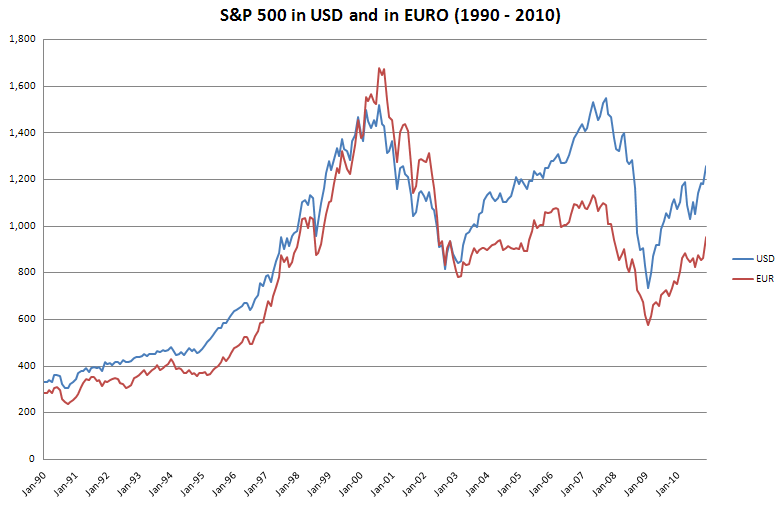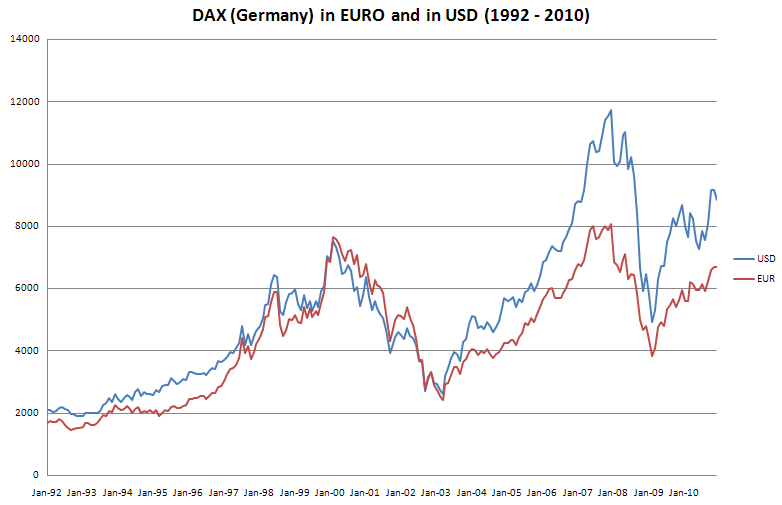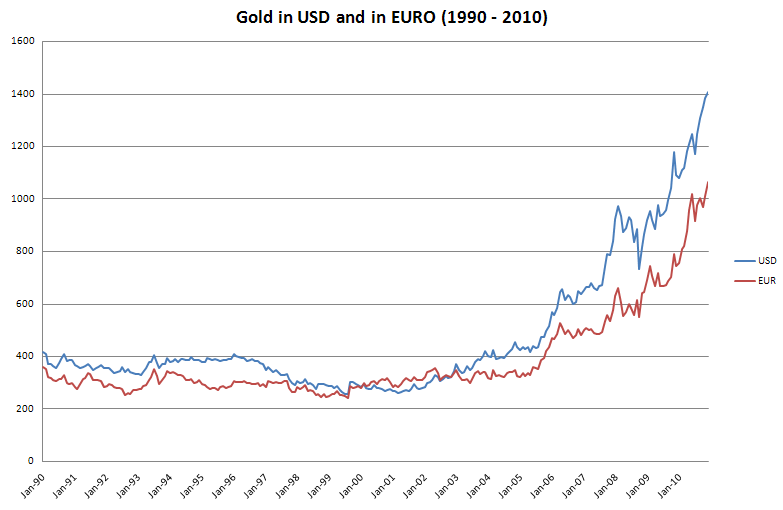What is the Euro-Dollar Impact on Your S&P 500, DAX and Gold Investments?

Without Market Timing, Euro investments in the S&P 500 do not provide good returns.
Currently the Euro is 16% weaker versus the US Dollar compared to its top in July 2008. At that top, the Euro was 81% more valuable than at its bottom in February 2002.
This currency rollercoaster can have a major impact on your investing returns when you invest your savings overseas. Foreign currency fluctuations can amplify your returns or annihilate them.
The gains and declines in the S&P 500 are always given in US Dollars. The DAX, the German stock market index is in Euro’s. The Gold price is normally shown in Dollars.
When you live in the US you most likely measure your wealth and gains in US Dollars. When you live in continental Europe however, you measure most likely your wealth in Euro’s. In the UK, you count in pound sterling, in India in rupees and in Australia in Australian Dollars.
To see the impact of currency fluctuations on stock market returns, I was wondering how the S&P 500 has developed in Euro’s and how the German DAX has done from a US Dollar perspective. And I liked to know what the impact was of the currency fluctuations on the price of Gold in Euros.
Since you normally do not see these graphs, I did the analysis myself.
Click now here to read the Free Guide on How to Use different Stock Market Trend Indicators.

Download the PDF that is attached to this article for larger versions of the charts.
Currency Developments Impact Returns, not Trends
Looking at the charts that are published here, you can come to the following conclusions:
The rise and fall of the S&P 500, the DAX and Gold are following a similar pattern regardless of the currency. The trends in the indices itself are stronger than the currency changes. Tops and bottoms in the indices occur for both currencies at the same time.
Over time, the return on investment is very much influenced by the currency perspective.
In Dollars, the S&P 500 is recovering nicely. Looking at the chart, you can have some confidence than the tops from end 2000 and end 2007 can be reached again within a foreseeable future. We are now less than 19% off the top from October 2007.
In Euros this is a different story. The S&P 500 top in Euros was in October 2000. To reach that level again, the S&P 500 index would have to increase in Euros with more than 75%. European investors who buy S&P 500 index funds better know when to step in and out of the market. A buy and hold approach has not worked very well here.

Gold has been a good investment since 2005, both in Euros and US Dollars.
Market Timing Reduces Risk in Overseas Investments
The situation is better for US investors who buy European index funds like the DAX. The DAX has provided better returns in US Dollars than in Euros for those long-term investors who stepped in during 2003. But the drop in 2008 was also larger in USD than in Euros. US investors with access to proper market timing signals for the DAX could have made a killing.
The gold price has shown an enormous development since 2005 in both the US Dollar and the Euro. Thus the current trend in the gold price is not something that just relates to the Dollar.
Overall these charts show that a buy and hold strategy in overseas funds nominated in foreign currencies could be extra risky due to currency developments. A market timing approach that can help you to step into the market around the bottoms and exit the market around the tops can reduce this risk for your long term returns.
Please download attached PDF to get larger versions of the charts in this article.
What are your conclusions when you see these charts?
Next & Previous Blog Post
- ‹ previous
- 63 of 174
- next ›


